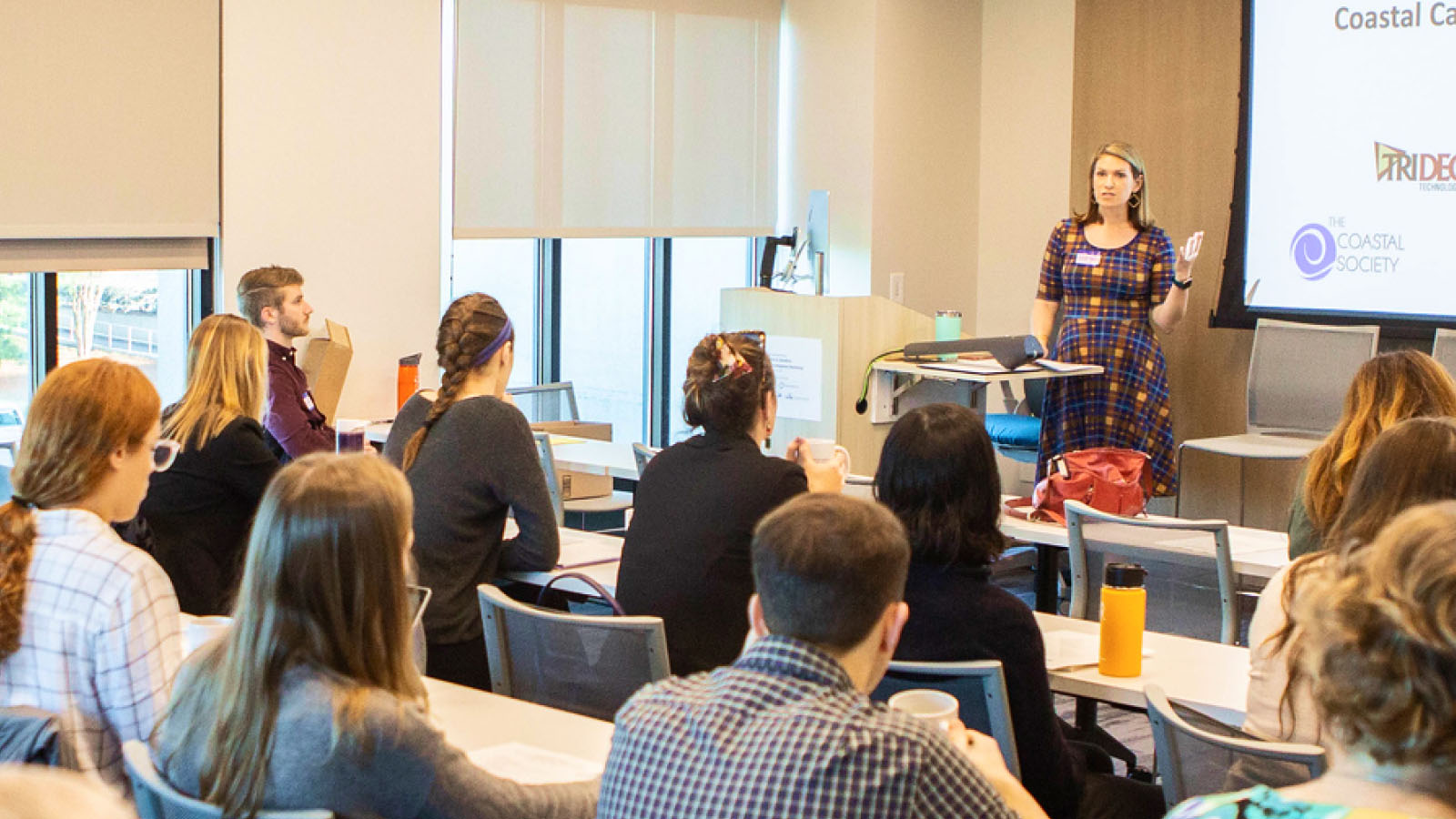The Takeaway: Learn how one community took a collaborative approach to developing green infrastructure design standards for retrofits.
Overview
Monroe County and the City of Rochester have been proactive in addressing flooding problems. Officials employed nature-based solutions, including bioswales, permeable sidewalks, and green roofs, using these projects as opportunities to test techniques, build skills, and get buy-in to support more use of green infrastructure.
“We’re working in a highly urbanized area with existing infrastructure, and there are many opportunities to reduce localized stormwater flooding and improve water quality,” said Andy Sansone, a Monroe County industrial waste engineer. “We have state guidance for new and redevelopment projects using best management practices, but our knowledge gap concerns the guidance needed to plan, design, and construct green infrastructure retrofit projects.”

Lessons Learned
- Determine the best way to get community buy-in. Although collaborative projects take more time, they have a proven record of success.
- Pick a priority and stick to it. Andy and the local team knew exactly what they wanted: green infrastructure design standards for retrofits. This made everyone’s job a lot easier, and expedited the process.
- Who you include—and when—matters. Knowing they had one chance to get it right, team members specifically chose to include people in the feedback process who would use the design guidance.
- It takes a village. While Andy was instrumental in leading the technical aspects, he attributes the project’s success to the multi-faceted team that included staff members from the City of Rochester’s Division of Environmental Quality, Monroe County’s Department of Planning and Development, and the GIS Services Division.
The Process
Andy Sansone manages the stormwater program for Monroe County’s Department of Environmental Services, an organization that combines advanced stormwater, wastewater, and solid waste management into one sophisticated, proactive operation. He and his team work with the municipalities in Monroe County, including the city of Rochester, to develop and implement collaborative water quality programs across the county. Coordination and inclusion are a large part of their mission, ensuring that municipalities are involved in decisions on planning, issues, and solutions. While such coordination isn’t always the case between city and county governments, Andy points out its importance, since both parties need each other for proper stormwater management.
To help Rochester and Monroe County meet their needs for design standards, New York Sea Grant and NOAA’s Office for Coastal Management partnered with them through a Great Lakes Restoration Initiative grant, providing technical assistance and funding to develop the design standards. The goal was to improve Rochester’s and Monroe County’s ability to incorporate green infrastructure into stormwater management. The design standards would enable the city and county to better plan, design, construct, and maintain green infrastructure retrofits.
“Having design standards would go a long way to help people get on a path to green infrastructure retrofit implementation, but asking folks to collaborate with us on the development would get us all closer to our goal: reducing stormwater runoff using best management practices,” Andy said of the project.
To help the team develop the design standards, the county and city staffs recommended Barton and Loguidice, a local engineering firm. “They’ve done green infrastructure projects in our county, and they knew what was needed in Rochester,” Andy said. “We trust them.”
Planning the Work Session
The team decided to take a collaborative approach to developing the design standards. One of the implementation barriers observed was not having standard design features for both the municipal and private sectors. “We wanted to overcome that barrier, and one of the ways to do that was to take into account other folks’ needs in the design standards,” said Andy.
To help understand these needs and get community buy-in, the team decided to conduct a work session. The purpose was to get experts in the room to identify and prioritize what was necessary to develop localized best management practices that would improve the planning, design, implementation, and maintenance of green infrastructure retrofits.
The next step was to develop a participant list. The team worked to narrow the list to people who work with green infrastructure projects and who would be users of the design guidance. A priority was also those who would advocate for green infrastructure projects and approaches, such as the head of the landscaping and roads department. They invited state government staff members to provide insight into the design standards process and ideas on what other towns were doing to address the problems. Rochester Institute of Technology staff members were also invited to share since they use green infrastructure on campus. This provided a diverse perspective on approaches, experiences, resources, and gaps.
To help with the work session planning, Barton and Loguidice defined each design phase and provided discussion questions. NOAA’s Office for Coastal Management and Sea Grant used this information to develop a process to facilitate the work session discussions.
Work Session
Approximately 30 people attended the session. The group focused on developing content for four distinct project phases. “This was a roll-your-sleeves-up type of meeting, where everyone was expected to contribute,” Andy noted. “We kept presentations to a minimum and made sure to use people’s time wisely while identifying what needed to be in the design standards.”
The morning session focused on setting the stage and letting participants know what was being developed, as well as how they were needed. The discussions, facilitated by NOAA, were broken into the four project phases: planning, design, construction, and maintenance. Attendees provided input on gaps in knowledge, issues with current processes, helpful resources, types of green infrastructure to include, information needed, and formats required for that information (e.g., technical drawings, checklists, etc.).
This approach provided the team with the details needed to develop the manual. “I think the reason we were so successful in getting the right level of information was because we got the right people in the room. We know that doesn’t always happen, and can really impact your project outcome,” said Andy.
Developing the Design Guidance
Barton and Loguidice’s role in the project was a critical next step, as they led the task of sorting through the feedback from the work session. Using their expertise, the work session input, and the local team’s input, they produced a draft design manual. As Andy pointed out, “Having Barton and Loguidice’s knowledge on how to develop the manual and lead this part of the project was critical, since they knew what needed to happen and how it needed to happen.”
Having people with solid technical experience to work on a focused need represents a necessary component of a successful project. Andy’s role was to provide this technical guidance. He was also instrumental in reviewing the document to ensure that it had the right level of detail and in identifying other users to review the content.
Outcome
Rochester and Monroe County now have green infrastructure design standards for retrofits useful for the planning, design, construction, and maintenance of stormwater projects. The document created in the process provides green infrastructure practices, engineering drawings, and resources for more information. The county and city are now working on a stormwater master plan to model the hydrology and identify where to implement future green infrastructure projects in order to reduce flooding and improve water quality. They are also looking forward to using the new design standards for other important projects.
The City of Rochester and Monroe County Green Infrastructure Retrofit Manual provides technical guidance and specifications on nine nature-based stormwater management practices for Monroe County’s environment, characteristics, and climate. The manual helps users decide whether to install a stormwater retrofit and determine what credits and incentives might be available, which practices are best for their property, which guidelines and standards must be met, and how to understand general operation and maintenance needs. The retrofit manual also contains information about the following topics.
- Planning and process
- Design guidance and details
- Soil infiltration and profile guidelines
- Landscape guidance and plant lists
- Credit and design example calculations
- Typical details
